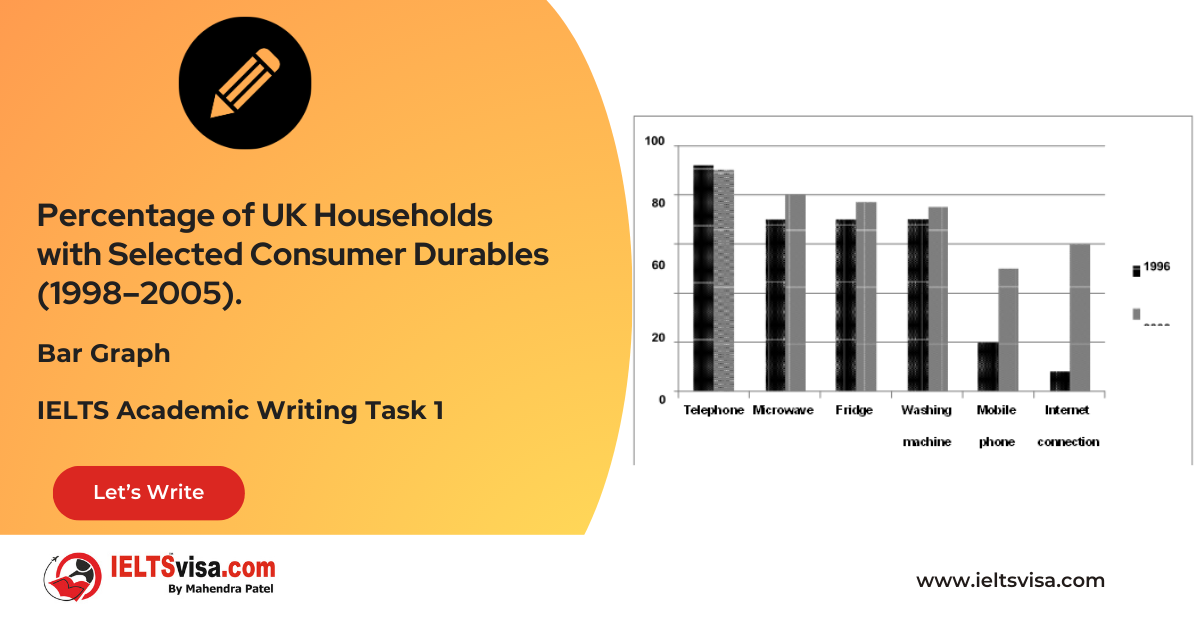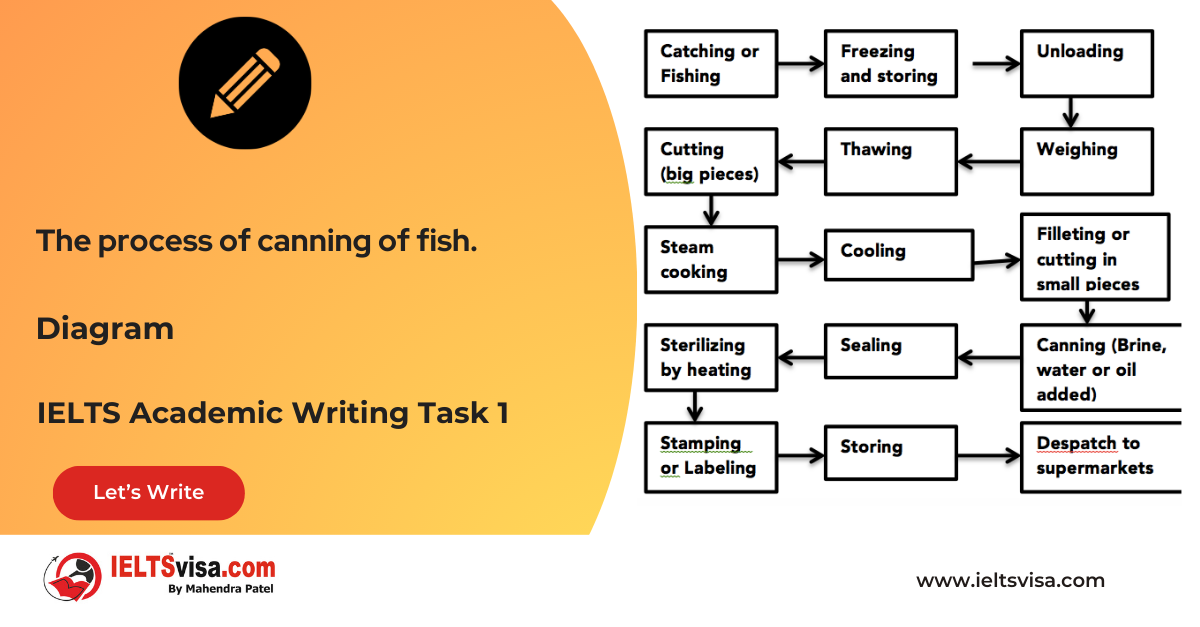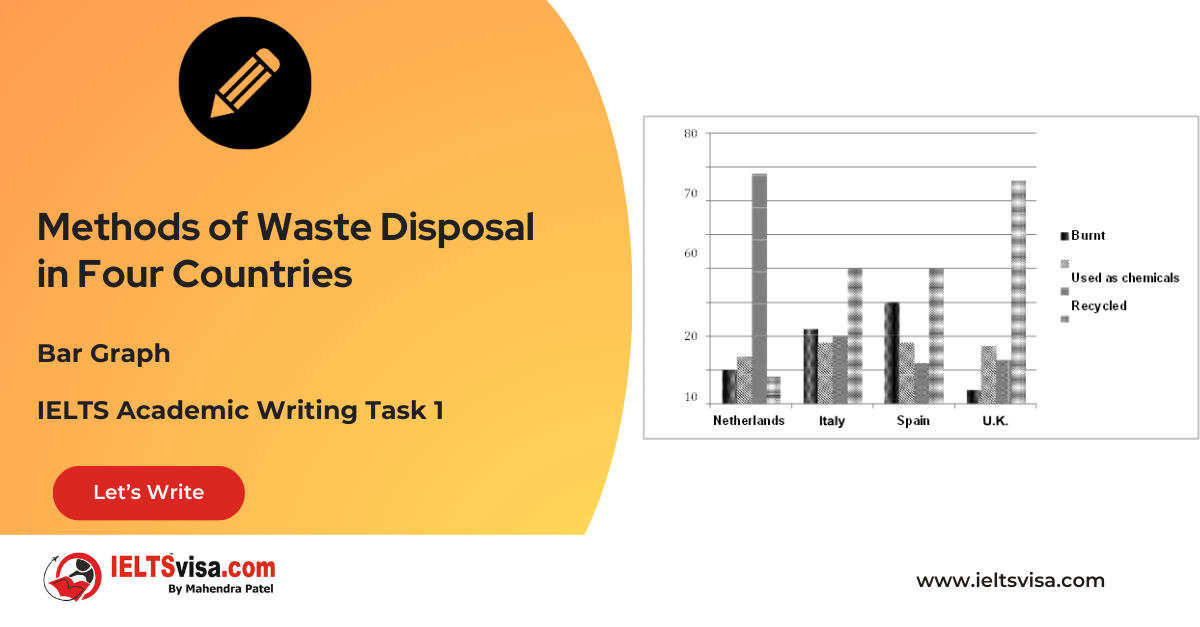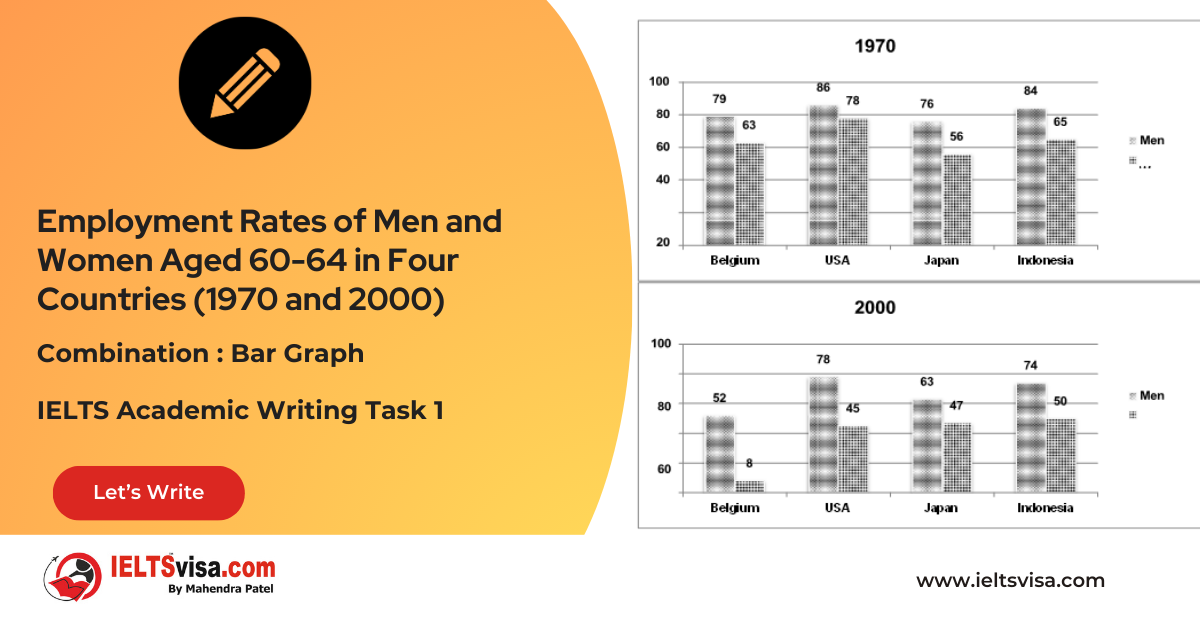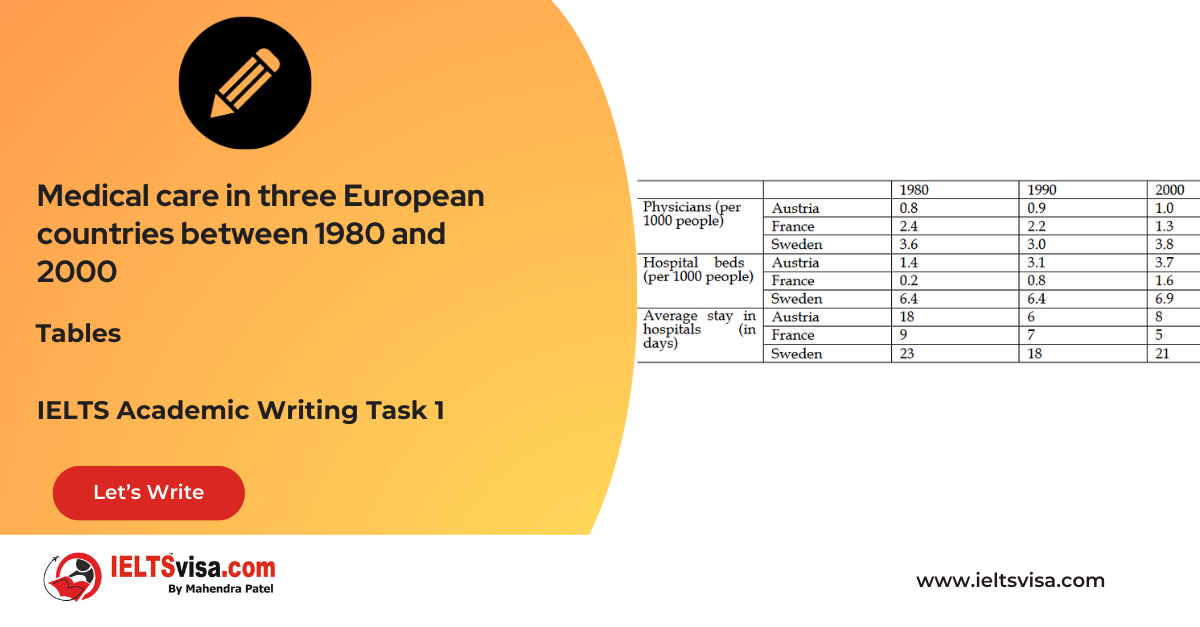Average Monthly Salary and Prices of Black and White and Color TV (1953-1973)
IELTS Academic Writing Task 1 - Line Graph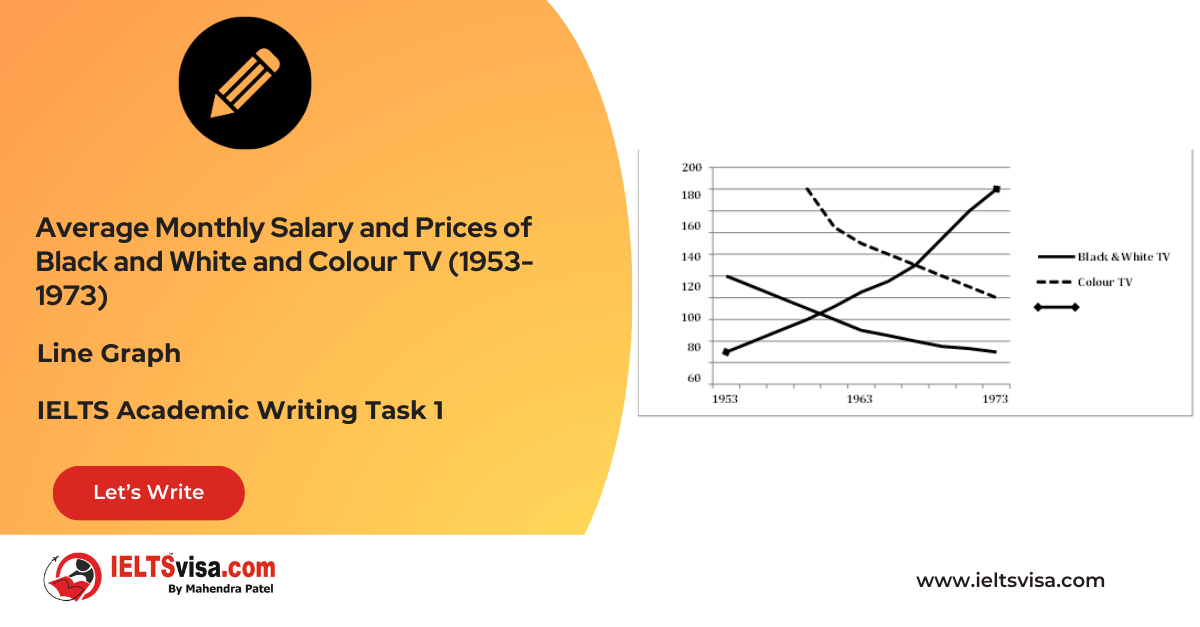
IELTS Writing Task 1 Question
The graph below shows the average monthly salary and the prices of black and white and colour TV in Japanese yen from 1953 to 1973
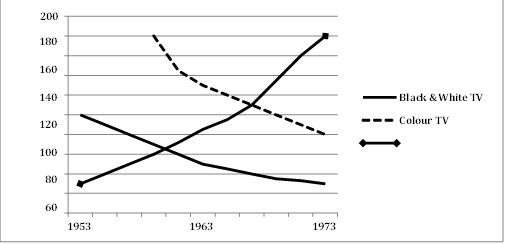
Common questions for the line graph
1. Graph Type: Line Graph
2. Title: Average Monthly Salary and Prices of Black and White and Colour TV (1953-1973)
3. What are the units of measurement?: Japanese yen
4. Who: Average monthly salary and TV prices in Japan
5. When: 1953 to 1973
6. Where: Japan
7. Topic: Comparison of monthly salary and prices of black and white and colour TVs over 20 years
Process Showing and Trends
Comparison 1: TV Prices in 1953
• Details:
1. Price of black and white TV: is 100,000 yen.
2. Colour TV appeared later in the late 1950s with a high starting price of 180,000 yen.
Comparison 2 : Changes from 1953 to 1973
• Details:
1. Black and white TV price dropped steadily to approximately 30,000 yen by 1973.
2. Colour TV price fell dramatically from 180,000 yen to 80,000 yen.
3. Average monthly salary increased from 30,000 yen to 180,000 yen by 1973.
Sample Answer
The given line graph shows the trends in the prices of black and white and colour TVs and the average monthly salary in Japanese yen from 1953 to 1973.
In 1953, the price of a black and white TV was 100,000 yen. Over the next decade, the price dropped significantly, reaching 50,000 yen by 1963. It continued to decline moderately and fell to around 30,000 yen by 1973. Colour TVs entered the market in the late 1950s, initially costing around 180,000 yen. By the mid-1960s, their price had decreased sharply to approximately 110,000 yen. A gradual decline followed, with the price reaching 80,000 yen by 1973.
In contrast, the average monthly salary started at a modest 30,000 yen in 1953 and increased steadily over the period. By 1968, the salary rose to 110,000 yen and saw a steep rise to about 180,000 yen by 1973.
Overall, while TVs, especially black and white ones, were expensive luxuries in 1953 compared to salaries, the significant rise in income by 1973 made even colour TVs affordable within one month’s salary.
Top 27 Vocabularies
| Vocabulary | Meaning | Synonyms | Examples | Type |
| Downward | Moving toward a lower level | Declining, decreasing | “The TV prices showed a downward trend over the two decades.” | Adjective |
| Dramatic | Sudden and striking | Significant, drastic | “The price of colour TV fell dramatically in the early years.” | Adjective |
| Escalation | A rapid increase | Surge, growth | “There was a steep escalation in average monthly salary after 1968.” | Noun |
| Modest | Relatively small or limited | Moderate, Minimal | “The average monthly salary started at a modest 30,000 yen.” | Adjective |
| Luxury | A state of great comfort or elegance | Indulgence, extravagance | “Even a black and white TV was a luxury for the common man in 1953.” | Noun |
| Fluctuate | To change continuously over time | Vary, oscillate | “The price of TVs fluctuated over the two decades.” | Verb |
| Trend | A general direction in which something is developing | Pattern, movement | “The graph shows a clear trend of declining TV prices.” | Noun |
| Steady | Happening in a gradual and consistent way | Stable, regular | “Salaries increased at a steady pace.” | Adjective |
| Surge | A sudden and large increase | Rise, jump | “There was a surge in income levels after 1968.” | Noun |
| Plummet | To decrease suddenly and significantly | Drop, collapse | “The price of black and white TVs plummeted in the 1960s.” | Verb |
| Depreciate | To decrease in value over time | Decline, reduce | “TV prices depreciated significantly by 1973.” | Verb |
| Influx | A large number of things arriving or happening at once | Flow, arrival | “The influx of colour TVs changed market dynamics.” | Noun |
| Peak | To reach the highest point | Climax, top | “The monthly salary peaked at 180,000 yen in 1973.” | Verb/Noun |
| Gradual | Happening slowly over time | Slow, progressive | “The decline in colour TV prices was gradual after 1965.” | Adjective |
| Sharp | Sudden and intense | Rapid, abrupt | “A sharp decrease in TV prices occurred in the 1960s.” | Adjective |
| Stabilize | To reach a steady level after fluctuations | Settle, secure | “The price of black and white TVs stabilized by 1973.” | Verb |
| Diminish | To decrease in size, extent, or importance | Reduce, lessen | “The cost of televisions diminished as technology improved.” | Verb |
| Dominate | To be the most influential or powerful | Control, lead | “Colour TVs began to dominate the market by the 1970s.” | Verb |
| Affordable | Reasonably priced and within financial reach | Economical, budget-friendly | “By 1973, colour TVs became more affordable.” | Adjective |
| Contrast | A difference between things being compared | Distinction, opposition | “The contrast between salaries and TV prices was striking.” | Noun |
| Prosperity | A state of economic growth and success | Wealth, affluence | “The rise in salaries reflected economic prosperity.” | Noun |
| Boom | A period of rapid growth | Expansion, upturn | “Japan experienced an economic boom in the 1970s.” | Noun |
| Scarce | In short supply | Limited, rare | “Colour TVs were scarce when first introduced.” | Adjective |
| Evolve | To develop gradually over time | Progress, transform | “TV technology evolved rapidly during this period.” | Verb |
| Flourish | To grow and develop successfully | Thrive, prosper | “The television industry flourished as demand increased.” | Verb |
| Prominent | Noticeable and important | Significant, noticeable | “Televisions became a prominent household item.” | Adjective |
| Inevitable | Certain to happen; unavoidable | Unavoidable, certain | “With rising incomes, TV affordability was inevitable.” | Adjective |

Our Books
Master IELTS Speaking Part 1
IELTS Writing Task 1 Book
IELTS Writing Task 2 Book
Practice IELTS Other Modules
IELTS Listening
The IELTS Listening test assesses how well you can understand spoken English in various contexts. It lasts about 30 minutes and is divided into four sections with a total of 40 questions. The listening tasks become increasingly difficult as the test progresses.
IELTS Academic Reading
The IELTS Academic Reading section assesses your ability to understand and interpret a variety of texts in academic settings. It is designed to evaluate a range of reading skills, including skimming for gist, reading for main ideas, reading for detail, understanding inferences, and recognizing a writer's opinions and arguments.
IELTS Speaking
The IELTS Speaking test assesses your ability to communicate in English on everyday topics. It lasts 11-14 minutes and consists of three parts: introduction, cue card, and a discussion based on the cue card topic.
IELTS General Reading
IELTS General Reading tests your ability to understand and interpret various types of texts. Here are some key areas and types of content you can expect to encounter in the reading section, along with tips for effective preparation.
IELTS Academic Writing Task 1
In IELTS Academic Writing Task 1, you are presented with a visual representation of information, such as graphs, charts, tables, or diagrams, and you are required to summarize, compare, or explain the data in your own words.
IELTS General Writing Task 1
In IELTS General Writing Task 1, you are required to write a letter based on a given situation. The letter can be formal, semi-formal, or informal, depending on the prompt. Here’s a breakdown of the key components to include in your letter
IELTS Academic Writing Task 2
In IELTS Academic Writing Task 2, you are required to write an essay in response to a question or topic. Here’s a guide to help you understand the essential elements of this task
IELTS Exam Tips
To succeed in the IELTS exam, practice regularly, familiarize yourself with the test format, improve your vocabulary, develop time management skills, and take mock tests to build confidence.
Grammer for IELTS
Grammar is the foundation of effective communication in English. Understanding tense usage, subject-verb agreement, and sentence structure enhances clarity and coherence in writing and speaking.
Vocabulary for IELTS
Vocabulary plays a crucial role in the IELTS (International English Language Testing System) exam, especially in the Speaking and Writing sections. Here’s an overview of why vocabulary is important and how it impacts your performance
RECENT IELTS SAMPLES QUESTIONS AND ANSWERS
Task 1 – Bar Graph – Percentage of UK Households with Selected Consumer Durables (1998–2005).
[df_adh_heading title_infix="IELTS Writing Task 1 Question" use_divider="on"...
Task 1 – Diagram – The process of canning of fish.
20:00 Start Pause Stop [df_adh_heading title_infix="IELTS Writing Task 1 Question" use_divider="on"...
Task 1 – Diagram – The life cycle of the salmon
20:00 Start Pause Stop [df_adh_heading title_infix="IELTS Writing Task 1 Question" use_divider="on"...
Task 1 – Bar Graph – Methods of Waste Disposal in Four Countries
[df_adh_heading title_infix="IELTS Writing Task 1 Question" use_divider="on"...
Task 1 – Combination : Bar Graph – Employment Rates of Men and Women Aged 60-64 in Four Countries (1970 and 2000)
[df_adh_heading title_infix="IELTS Writing Task 1 Question" use_divider="on"...
Task 1 – Table – The information about medical care in three European countries between 1980 and 2000
20:00 Start Pause Stop [df_adh_heading title_infix="IELTS Writing Task 1 Question" use_divider="on"...

